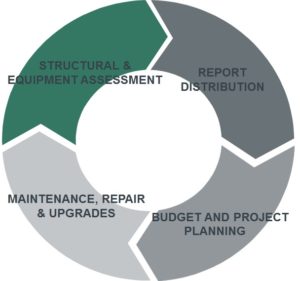WHAT IT IS
Increased safety and asset performance
HOW IT BENEFITS
The goal of Asset Management is to effectively manage corporate assets in order to gain maximum value and return on investment whilst safeguarding the health and safety of the persons at the facility, the environment and the community.

The primary objective of Asset Integrity Management (AIM) is to maintain the asset in a fit-for-service condition while extending its remaining life in the most reliable, safe, and cost effective manner. Therefore plant integrity, safety, and reliability are major concerns to all plant operators and asset managers.
At ARC our vehicle for AIM is Asset Performance Management (APM) .
The drivers of the APM are Compliance, Reliability and Performance. In order to achieve Performance the criterion of Compliance and Reliability must be first satisfied.
Asset Integrity = profitability & performance
Following a robust APM program will assist companies in protecting their primary assets. This is achieved through the implementation of inspection policies, standards, guidelines and procedures together with management systems that can act on the information gathered. It is paramount that these processes are executed by personnel who have the required training, knowledge and industry specific experience to deliver positive and meaningful results by way of a Facility Condition Assessment (FCA).
SYSTEMS ENGINEERING APPROACH
This value of the systems engineering process may be realized in a number of ways, including:
- increased ability to estimate system life-cycle costs,
- reduced redesign due to consideration of the entire system throughout its development,
- increased ability to effect design changes and retrofits due to clear traceability of requirements, design features, and configuration control, and
- increased probability of achieving the best technical design and operational concept through the iterative consideration of design alternatives, where “excellence” is defined through decision criteria such as cost, risk, and optimization.